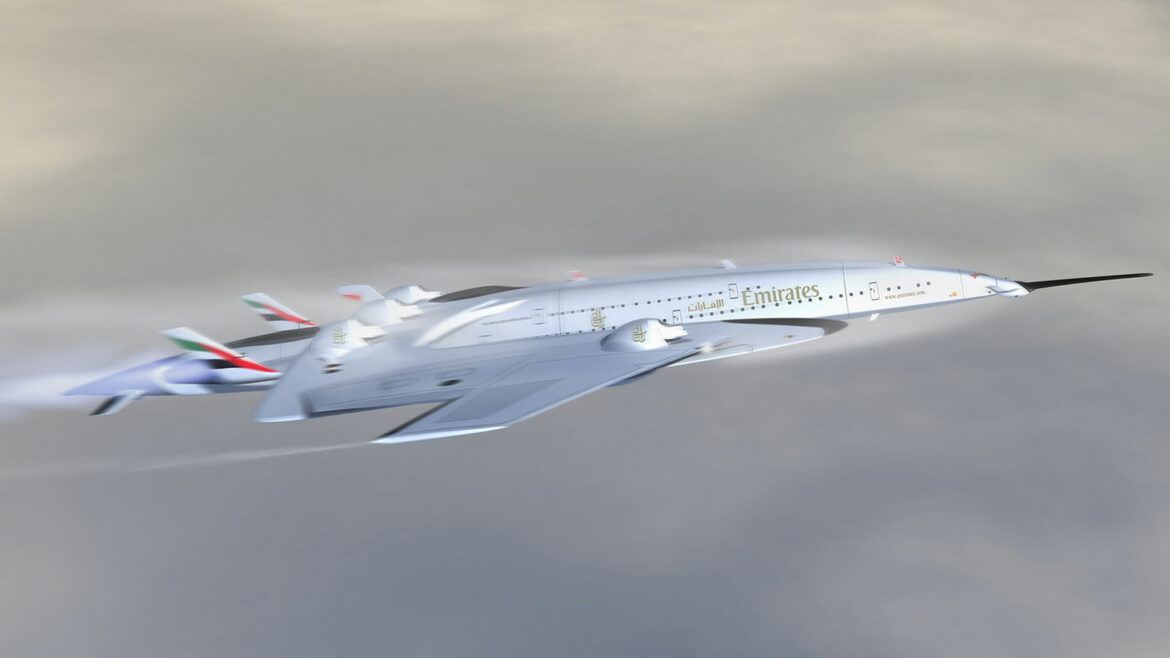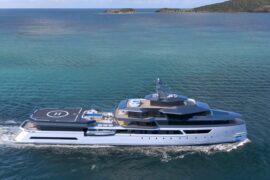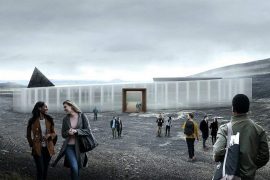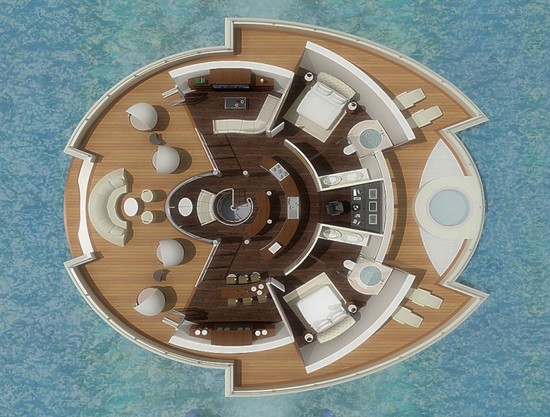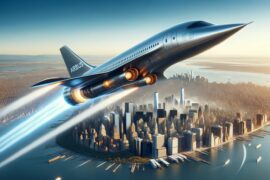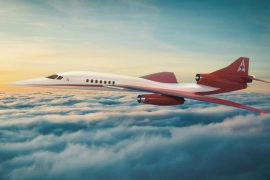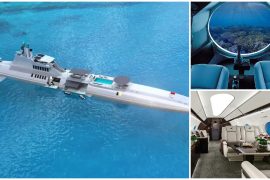Sonic boom continues to be one of the biggest hurdles in the quest to reintroduce supersonic commercial air travel. A little more than five decades ago, the federal government in the US came up with a rule that prohibits non-military aircraft from flying faster than sound because of the resulting sonic boom. Most European nations have a similar ban on commercial jets flying at supersonic speeds over land. Spanish designer Oscar Vinals’ ambitious Flash Falcon concept not only mitigates the devastating effects of the sonic boom but also addresses the issue of carbon footprint with its futuristic zero-emissions propulsion system.
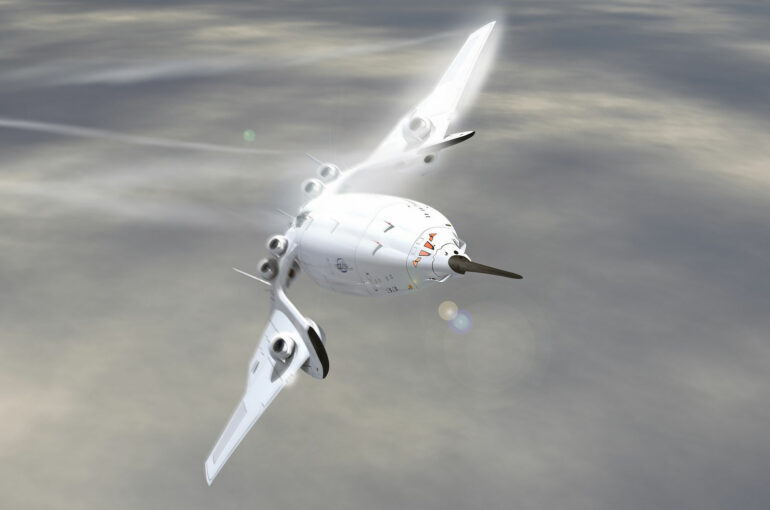
Vinals is the same designer who came up with the Sky OV and Sky Magnetar design studies, which are among many other concepts he penned to explore possibilities of building supersonic and hypersonic aircraft in the future.
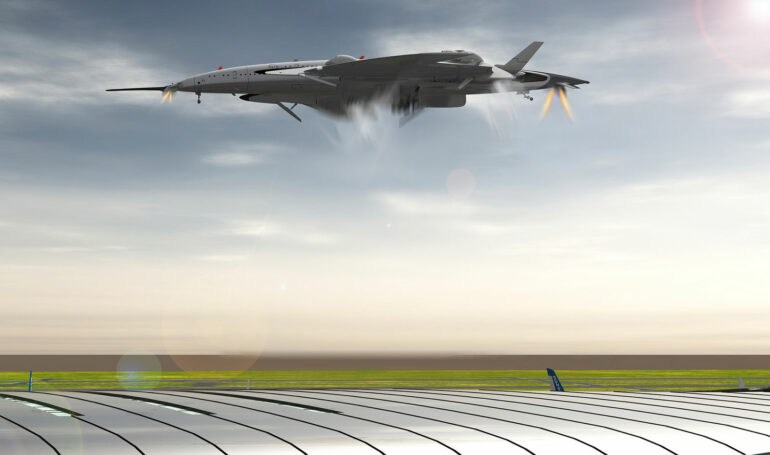
Powered by a combination of hybrid combustion engines and a nuclear-powered rocket engine, the Flash Falcon (FF) has been designed to carry up to 250 passengers at speeds of up to Mach 3 (2282 mph). This will help reduce the travel time from Paris to New York to just 2.5 hours. The first thing you’ll notice about the concept is its unusual design, which is inspired by the falcon bird. Instead of a sleek cylindrical fuselage, which is crucial for supersonic speeds, the FF concept features a much thicker and flatter design, which opens up a lot of space inside the cabin.
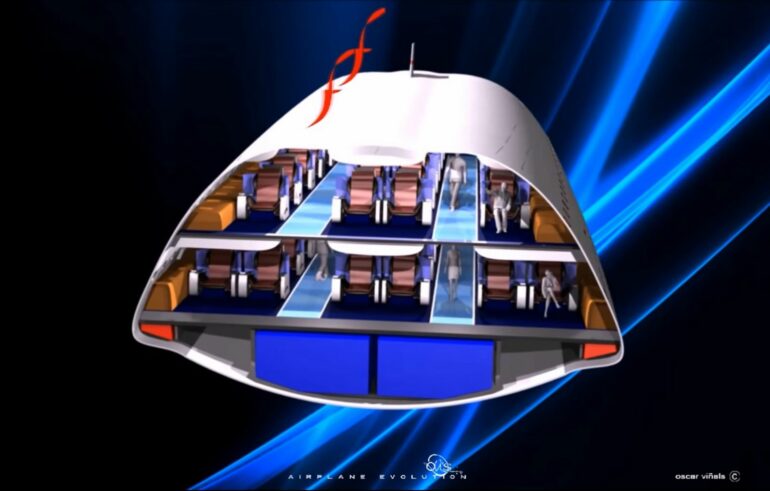
On the inside, the supersonic aircraft has two decks, with business class seating on the upper deck and “Super-tourist class” seating on the deck below. According to Vinals, the supersonic jet could comfortably accommodate up to 250 passengers while offering more “personal space” than current commercial airplanes. Right below the passenger decks is the payload area, which also has room for big, high-capacity graphene batteries for the hybrid engines.
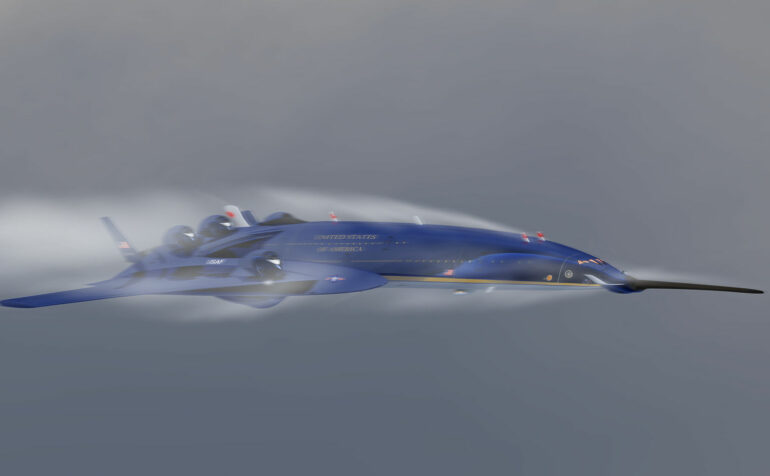
The Flash Flacon also features a very unconventional wing design that appears to be inspired by birds. The wing, which appears to be one giant structure, is attached to the fuselage at the rear, but it extends all the way up to the front. Vinals says the smart wings can change their angle of inclination in relation to the central fuselage for optimized aerodynamic performance.
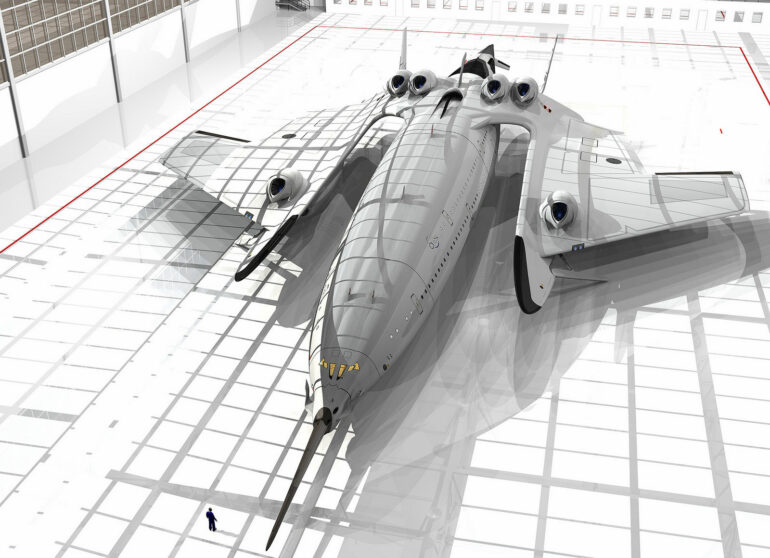
Furthermore, there are special wing-shocks that support the weight of the wing, and the engines mounted on them. The concept’s futuristic propulsion system includes six electronic-combustion hybrid engines.
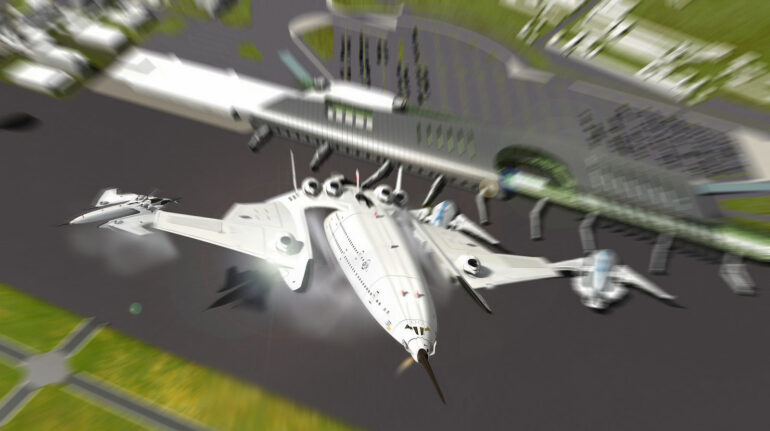
These engines have an electric superconductive fan engine (ESF) and a combustion engine that burns hydrogen and oxygen for emission-free thrust. Interestingly, these engines have a regulator system that can redirect the gas exhaust to the front, rear, or down. As a result, the massive aircraft, measuring 102 meters in length, can take off and land vertically like a Harrier jump jet of the F-35B.
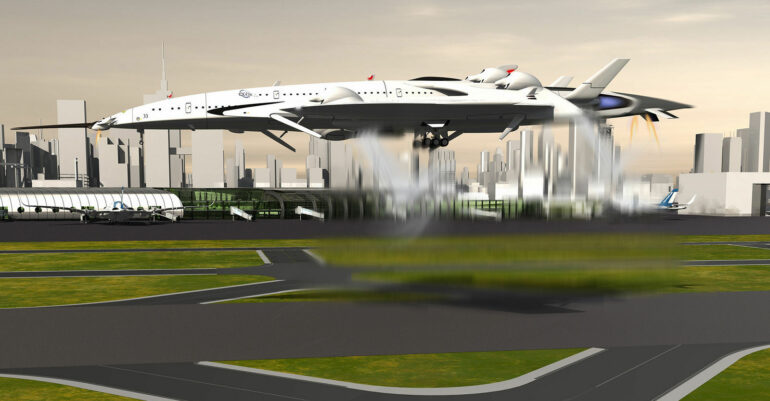
The hybrid engines are meant to propel the aircraft during take-off, landing, and flying at subsonic speeds. Once the FF reaches an altitude of 60,000 feet, its nuclear engine at the tail takes over. The engine is based on a Portable Fusion Reactor and could use only hydrogen as its fuel, according to the aircraft’s designer. Additionally, the engine is equipped with a thrust vectoring nozzle, which eliminates the need for a vertical stabilizer and rudder to control the aircraft’s yaw.
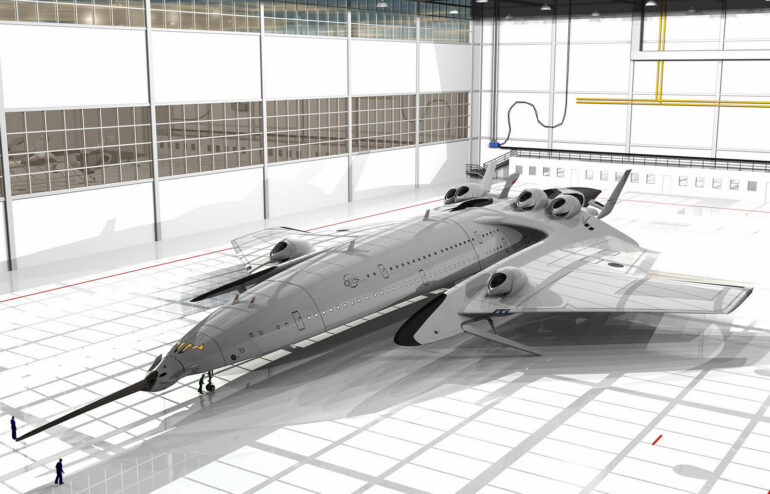
Another interesting design element you’ll notice is the aircraft’s long nose, which helps mitigate sonic booms. According to the designer, the nozzle at the nose has an air intake that redirects cool gas over different surfaces to muffle noise at supersonic speeds. Furthermore, the long nose gives the aircraft a good air-front penetration, diving the shockwaves to reduce sonic boom.
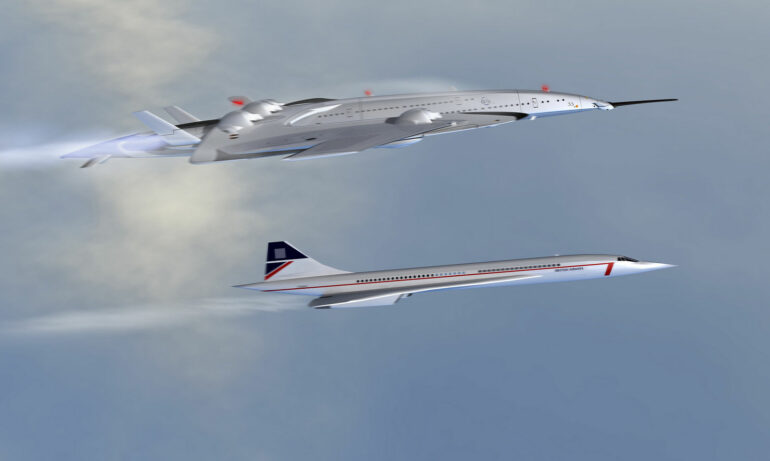
The Flash Flacon is a “hypothetical” aircraft, so don’t expect it to enter production anytime soon. However, such design studies might help develop technologies that might make it to actual supersonic jets in the future.
